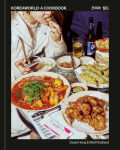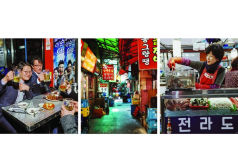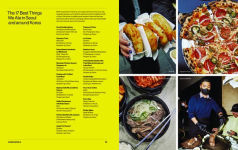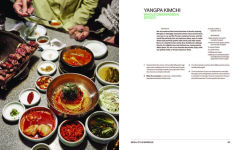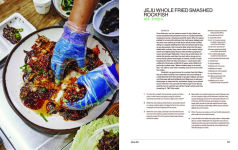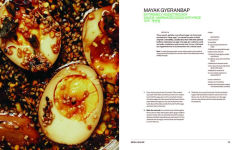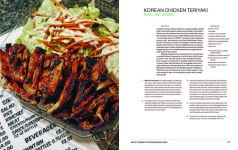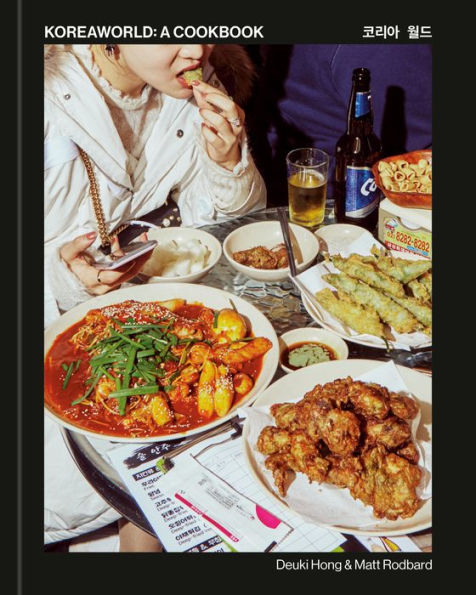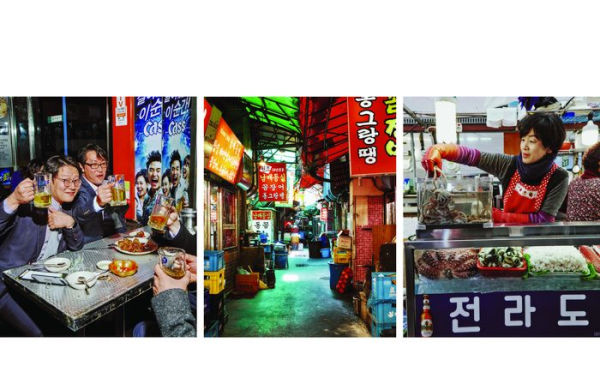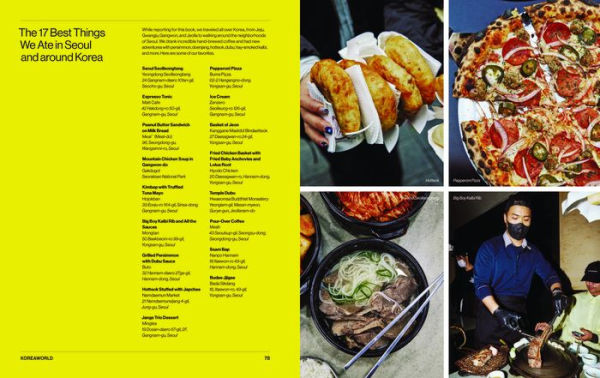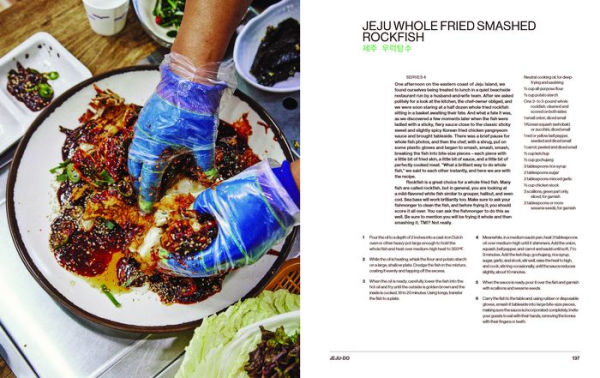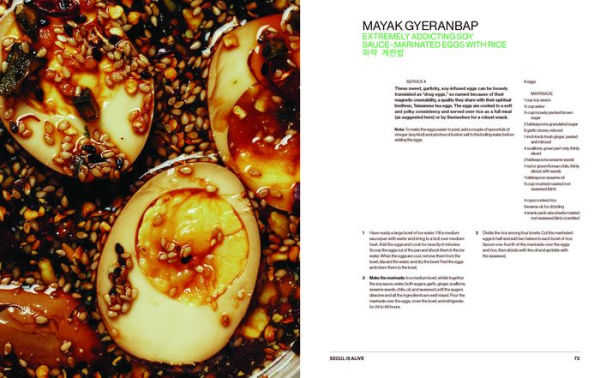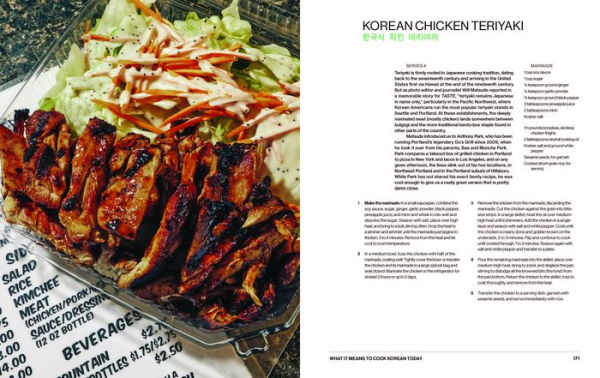As we head into summer and make plans for barbecues, picnics and brunches aplenty, we’ve got you covered with zesty cookbooks sure to make your party a poppy good time.
Koreaworld: A Cookbook
A vibrant exploration of Korean cuisine, both in Korea and in Koreatowns around the globe, with more than 75 bold, flavor-packed recipes and stunning photography from the New York Times bestselling authors of Koreatown.
“A whirlwind introduction to a whole new world of food and an entirely new perspective on Korean cooking.”—Ruth Reichl, journalist and author of The Paris Novel
Join chef Deuki Hong and journalist Matt Rodbard as they take an insider’s look at the exciting evolution of Korean food through stories of chefs and home cooks, as well as recipes that are shaping modern Korean cuisine, including sweet-spicy barbecue, creative rice and seafood dishes, flavor-bombed stews, and KPOP-fueled street food.
In Koreatown, Deuki and Matt explored the foods of Korean American communities across the United States. Now with Koreaworld, they show how Korean cuisine today is nothing less than an international culinary revolution, from the ancient plant-based cooking of famed Buddhist monk-chefs to modern charred-greens rice rolls and pork-stuffed fried peppers.
Koreaworld takes readers into the bustling metropolis of Seoul, where the modern-day barbecue scene is pushing into new territory with recipes like Smoked Giant Short Ribs cooked over hay and where the city’s third-wave coffee culture is exploding. Deuki and Matt also visit Jeju Island, where seafood dishes like Jeju Whole Fried Smashed Rock Fish rule supreme, and they explore the plant-based temple cuisine found in the rural province of Jeolla-do, with dishes such as Cold Broccoli Salad with Ssamjang Mayo. The tour continues with late-night food adventures in Los Angeles and stops in the kitchens of innovative chefs from New York City to Portland who are putting modern spins on Korean classics with dishes like Rice and Ginseng–Stuffed Roast Chicken, Grilled Kimchi Wedge Salad, Kkaennip Pesto, and Pineapple Kimchi Fried Rice. Filled with recipes, stories, and conversations of Korean food’s global evolution, Koreaworld is essential reading for anyone curious about the future of food.
1143820660
“A whirlwind introduction to a whole new world of food and an entirely new perspective on Korean cooking.”—Ruth Reichl, journalist and author of The Paris Novel
Join chef Deuki Hong and journalist Matt Rodbard as they take an insider’s look at the exciting evolution of Korean food through stories of chefs and home cooks, as well as recipes that are shaping modern Korean cuisine, including sweet-spicy barbecue, creative rice and seafood dishes, flavor-bombed stews, and KPOP-fueled street food.
In Koreatown, Deuki and Matt explored the foods of Korean American communities across the United States. Now with Koreaworld, they show how Korean cuisine today is nothing less than an international culinary revolution, from the ancient plant-based cooking of famed Buddhist monk-chefs to modern charred-greens rice rolls and pork-stuffed fried peppers.
Koreaworld takes readers into the bustling metropolis of Seoul, where the modern-day barbecue scene is pushing into new territory with recipes like Smoked Giant Short Ribs cooked over hay and where the city’s third-wave coffee culture is exploding. Deuki and Matt also visit Jeju Island, where seafood dishes like Jeju Whole Fried Smashed Rock Fish rule supreme, and they explore the plant-based temple cuisine found in the rural province of Jeolla-do, with dishes such as Cold Broccoli Salad with Ssamjang Mayo. The tour continues with late-night food adventures in Los Angeles and stops in the kitchens of innovative chefs from New York City to Portland who are putting modern spins on Korean classics with dishes like Rice and Ginseng–Stuffed Roast Chicken, Grilled Kimchi Wedge Salad, Kkaennip Pesto, and Pineapple Kimchi Fried Rice. Filled with recipes, stories, and conversations of Korean food’s global evolution, Koreaworld is essential reading for anyone curious about the future of food.
Koreaworld: A Cookbook
A vibrant exploration of Korean cuisine, both in Korea and in Koreatowns around the globe, with more than 75 bold, flavor-packed recipes and stunning photography from the New York Times bestselling authors of Koreatown.
“A whirlwind introduction to a whole new world of food and an entirely new perspective on Korean cooking.”—Ruth Reichl, journalist and author of The Paris Novel
Join chef Deuki Hong and journalist Matt Rodbard as they take an insider’s look at the exciting evolution of Korean food through stories of chefs and home cooks, as well as recipes that are shaping modern Korean cuisine, including sweet-spicy barbecue, creative rice and seafood dishes, flavor-bombed stews, and KPOP-fueled street food.
In Koreatown, Deuki and Matt explored the foods of Korean American communities across the United States. Now with Koreaworld, they show how Korean cuisine today is nothing less than an international culinary revolution, from the ancient plant-based cooking of famed Buddhist monk-chefs to modern charred-greens rice rolls and pork-stuffed fried peppers.
Koreaworld takes readers into the bustling metropolis of Seoul, where the modern-day barbecue scene is pushing into new territory with recipes like Smoked Giant Short Ribs cooked over hay and where the city’s third-wave coffee culture is exploding. Deuki and Matt also visit Jeju Island, where seafood dishes like Jeju Whole Fried Smashed Rock Fish rule supreme, and they explore the plant-based temple cuisine found in the rural province of Jeolla-do, with dishes such as Cold Broccoli Salad with Ssamjang Mayo. The tour continues with late-night food adventures in Los Angeles and stops in the kitchens of innovative chefs from New York City to Portland who are putting modern spins on Korean classics with dishes like Rice and Ginseng–Stuffed Roast Chicken, Grilled Kimchi Wedge Salad, Kkaennip Pesto, and Pineapple Kimchi Fried Rice. Filled with recipes, stories, and conversations of Korean food’s global evolution, Koreaworld is essential reading for anyone curious about the future of food.
“A whirlwind introduction to a whole new world of food and an entirely new perspective on Korean cooking.”—Ruth Reichl, journalist and author of The Paris Novel
Join chef Deuki Hong and journalist Matt Rodbard as they take an insider’s look at the exciting evolution of Korean food through stories of chefs and home cooks, as well as recipes that are shaping modern Korean cuisine, including sweet-spicy barbecue, creative rice and seafood dishes, flavor-bombed stews, and KPOP-fueled street food.
In Koreatown, Deuki and Matt explored the foods of Korean American communities across the United States. Now with Koreaworld, they show how Korean cuisine today is nothing less than an international culinary revolution, from the ancient plant-based cooking of famed Buddhist monk-chefs to modern charred-greens rice rolls and pork-stuffed fried peppers.
Koreaworld takes readers into the bustling metropolis of Seoul, where the modern-day barbecue scene is pushing into new territory with recipes like Smoked Giant Short Ribs cooked over hay and where the city’s third-wave coffee culture is exploding. Deuki and Matt also visit Jeju Island, where seafood dishes like Jeju Whole Fried Smashed Rock Fish rule supreme, and they explore the plant-based temple cuisine found in the rural province of Jeolla-do, with dishes such as Cold Broccoli Salad with Ssamjang Mayo. The tour continues with late-night food adventures in Los Angeles and stops in the kitchens of innovative chefs from New York City to Portland who are putting modern spins on Korean classics with dishes like Rice and Ginseng–Stuffed Roast Chicken, Grilled Kimchi Wedge Salad, Kkaennip Pesto, and Pineapple Kimchi Fried Rice. Filled with recipes, stories, and conversations of Korean food’s global evolution, Koreaworld is essential reading for anyone curious about the future of food.
35.0
In Stock
5
1

Koreaworld: A Cookbook
304
Koreaworld: A Cookbook
304
35.0
In Stock

Product Details
| ISBN-13: | 9780593235942 |
|---|---|
| Publisher: | Clarkson Potter/Ten Speed |
| Publication date: | 04/23/2024 |
| Pages: | 304 |
| Sales rank: | 72,093 |
| Product dimensions: | 10.10(w) x 8.20(h) x 1.00(d) |
About the Author
From the B&N Reads Blog
